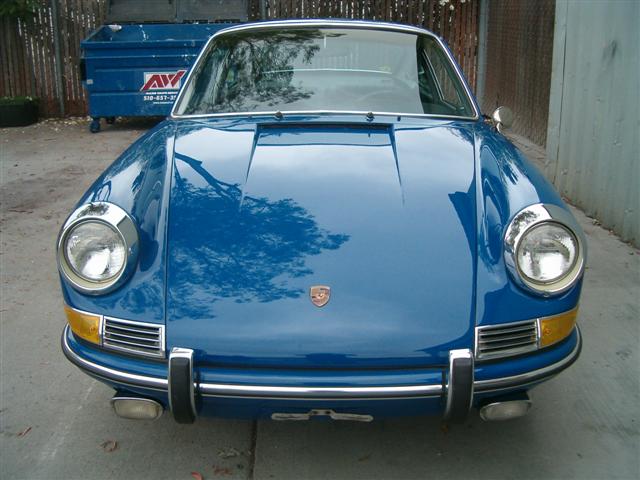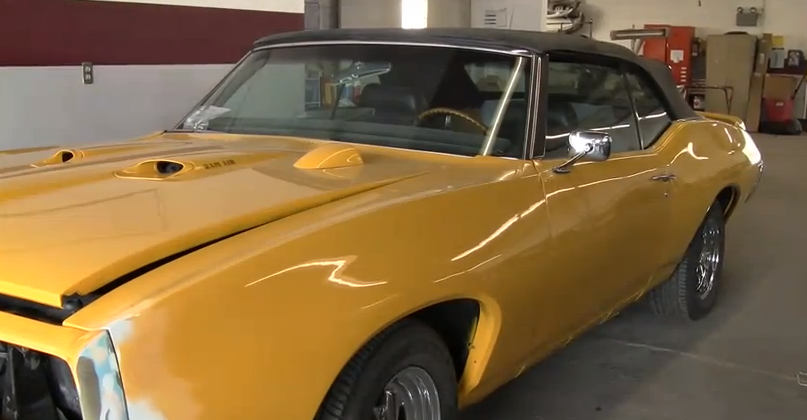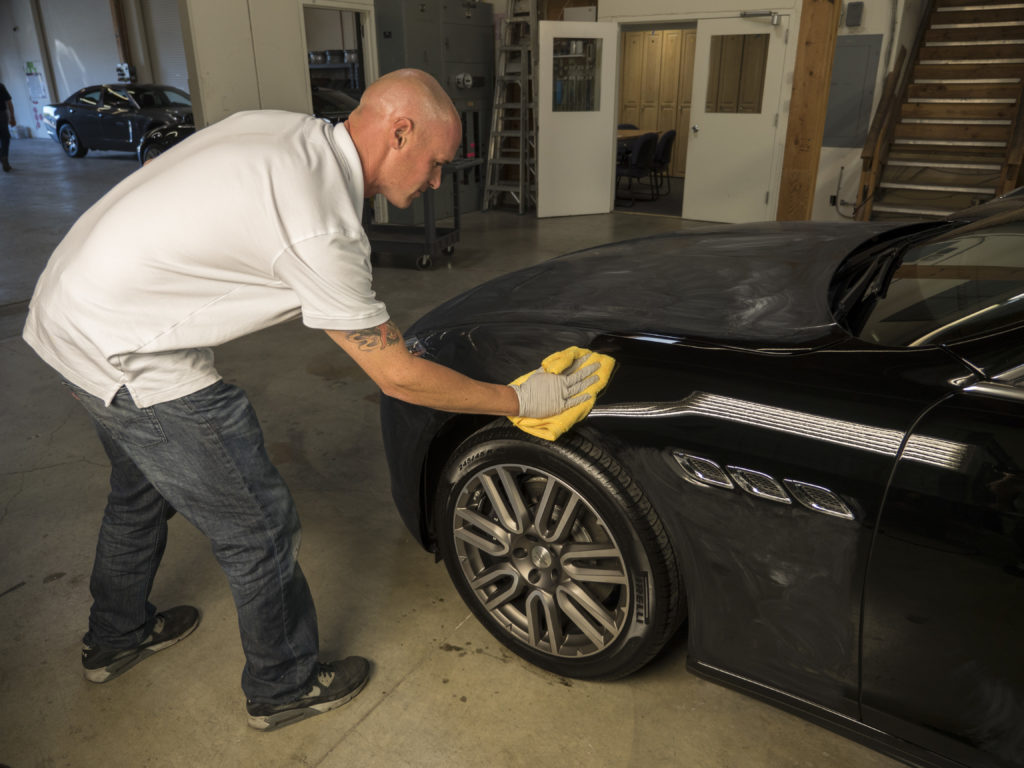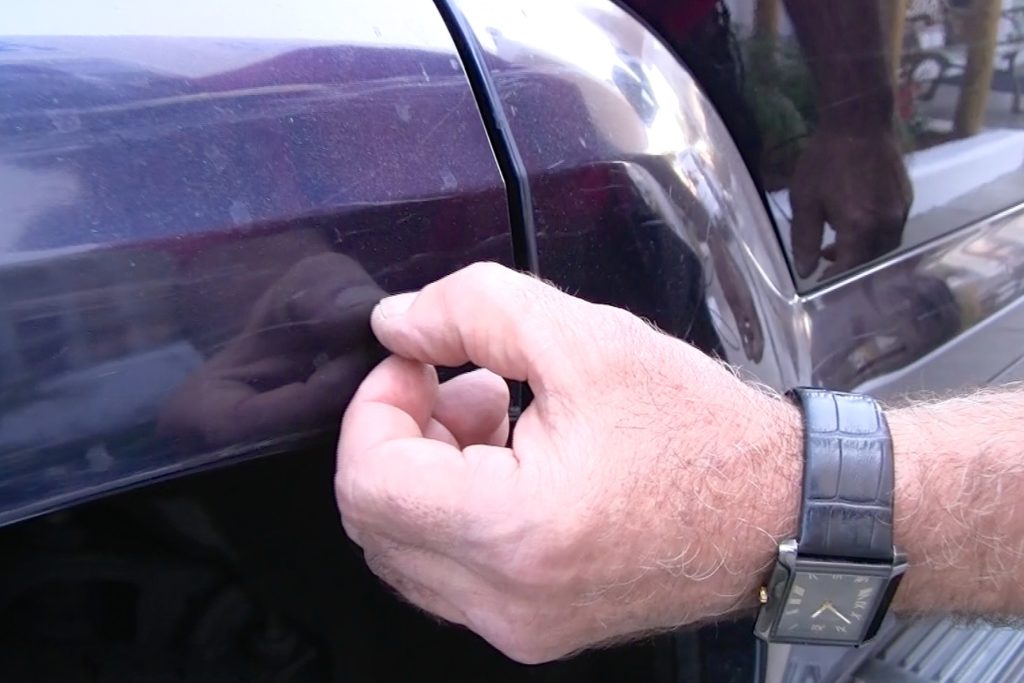
In order to maintain your car’s appearance, you’ll need to know how to properly care for its paint and clear coat. Photo: Coelho’s Body Repair & Auto Sales, Inc. (2018)
For many people, a car represents more than a mere means of conveyance. It might be a status symbol, a passion project or simply the result of long-term hard work and frugality. If any of these applies to you, you’re likely as concerned about your car’s outward appearance as you are about its internal components, in which case you’ll want to know how to effectively maintain it. To that end, we’ve asked six Diamond Certified Expert Contributors to provide their auto body care tips.
Washing your car
Despite being the simplest aspect of auto body care, many people get car washing wrong. Often, this stems from a misconception that washing a car is just like washing the dishes. “Many people use dish detergent and cotton towels to wash and dry their cars, but both are detrimental to clear coats,” explains Tristin Wurzbach of B2 Perfection Auto Body. “The chemicals in dish soap can remove a car’s wax coat, strip the exterior finish and dull the paint job, while hard cotton towels can leave fine scratches on a car’s exterior that cause a ‘spider webbing’ effect.” To avoid these effects, Mr. Wurzbach recommends washing your car with a product specifically designed for automotive use. For drying, he suggests using either a chamois leather cloth or a microfiber towel.
Even when using the right cleaning tools, it’s still possible to accidently harm your car’s exterior while washing it. A common example of this is using a dirty sponge or cloth, which can leave scratches on your car’s clear coat. That’s why Mr. Wurzbach recommends thoroughly rinsing off your cleaning tool before washing to ensure all dirt and debris has been removed.
Of course, not everyone likes to do their own car washing—many find it faster and easier to go to the drive-through carwash at their local gas station. However, while convenient, these types of carwashes can have detrimental effects of their own. “Commercial carwashes are very hard on vehicles, from the heavy chemicals in the detergent to the abrasive slapping of the roto-brushes,” explains Mike Ludeman of Western Auto Body, Inc. “Going to a carwash once in a while is fine, but it’s not good to subject your car to such harsh treatment on a regular basis. It’s much better to wash it yourself.”

To prevent permanent markings on your car’s body, regularly inspect it for contaminants like tree sap and bird droppings. Photo: Simply Superior Auto Body (2018)
Contaminant removal
While regular washing will help keep your car clean, elements like tree sap, bird droppings, and insect remains require more than soap and water to remove. Due to their corrosive nature, Mr. Wurzbach says it’s best to remove these contaminants before they dry and harden. “Tree sap and bird feces are both extremely acidic and can easily damage your car’s paint job. If not cleaned off promptly, they can leave permanent marks, especially during summer, when high temperatures can cause them to bake onto your car’s exterior.”
If you need to remove contaminants that have already hardened, Mr. Wurzbach recommends using bug and tar remover, which provides increased cleaning power without harming your car’s finish. Once the contaminants have been removed, he suggests applying some Turtle Wax® to protect against recontamination.
Bird droppings and tree sap aren’t the only contaminants that can harm your car’s paint job—there are also less obvious elements like brake dust and industrial pollutants. “The airborne dust that falls on your car contains iron particles, which become catalyzed and stick to the paint when condensation occurs,” explains Rich Lezcano of Simply Superior Auto Body. “This creates a layer of grit that soap and water can’t remove.”
Fortunately, Mr. Lezcano says there’s a tool that can remove these contaminants: a clay bar, which looks similar to an ordinary bar of soap. After spraying a small area of your car with clay lubricant, gently rub the clay bar back and forth. At first, the bar will cling to your car, which indicates it’s pulling contaminants out of the paint. When you’re able to slide the bar easily across the area, you’ll know it’s clean. Annual clay bar applications will ensure your car’s body stays as clean and contaminant-free as possible.

Besides maintaining your car’s glossy appearance, waxing gives its clear coat an added layer of protection against the elements. Photo: Diablo Motors (2018)
Body protection
Manually removing dirt and contaminants is a crucial part of auto body care, but you should also take measures to fortify your car’s exterior against these elements. The simplest way is by waxing, which not only maintains car paint’s glossy appearance but also adds protection to the clear coat, helping it stand up to contamination, UV light and other sources of deterioration.
Most professionals agree that waxing your car two to three times a year is sufficient, although some choose to wax more often. If you’re having difficulty keeping track of proper waxing intervals, Mr. Lezcano says there’s an easy way to tell if it’s time. “On a properly waxed surface, water ‘beads’ when condensation occurs, which means it collects into round, beadlike shapes. If water doesn’t do this on your car, it means the wax has dissipated and it’s time to apply a new coat.”
As an alternative to waxing, Ilya Rosenthal of Luxurati of California Auto Body & Repair & Smog suggests applying a paint sealant to your vehicle. Unlike wax, which is a natural product, paint sealant is as synthetic as it gets, engineered with polymers that bond together to produce a rigid casing about your car’s exterior. The biggest selling point of paint sealant is its durability—since it doesn’t wash away as quickly as wax, it’s able to provide better long-term protection. Additionally, today’s sealants offer enhanced aesthetic properties that rival the lustrous sheen of wax.

To determine whether a minor body scratch can be polished out, run your fingernail across it and see if it falls into a groove. Photo: American Ratings Corporation (2018)
Scratch and chip repair
Preventive measures can go a long way toward protecting your car’s body, but when damage does occur, you’ll need to know how to address it. Depending on the extent of the damage, you may be able to repair paint scratches and chips yourself. According to Alex Rodriguez of A-Rod Auto Collision, some minor scratches don’t even require additional paint—they can simply be polished out.
Mr. Rodriguez says there’s a simple test to determine whether this is the case. “Run your fingernail across the scratch. If it drops into a groove, this indicates a deeper scratch that will likely require additional paint. If, however, your fingernail brushes seamlessly over it, it means the scratch hasn’t penetrated the paint coat and there’s a good chance it will polish out.” To polish out a scratch, Mr. Rodriguez says to simply apply some rubbing compound to a rag and rub it vigorously over the affected area. Within seconds, the scratch should be gone.
For repairing deeper surface scratches, you’ll need to employ a more involved procedure. Phil Chadd of Phil’s Auto Body gives his 3-step technique:
- Use a combination of ultra-fine grit sandpaper and soapy water to remove the scratch.
- Find your car’s paint code on the door jamb and buy some touch-up paint of the same color.
- After applying the paint and allowing it to dry, apply a polishing compound to blend the paint into the finish.
Another type of body damage that you may be able to fix yourself is rock chips. “After cleaning the area with soap and water, rub a dab of polishing compound over the chip,” directs Mr. Chadd. “Next, clean the area with isopropyl alcohol and carefully apply the correct type of paint to individual chips. After giving the paint a couple of days to cure, repolish the area to smooth out the edges of the repair.”
It’s important to note that deep scratches and rock chips in a car’s paint aren’t just unsightly—they can also leave the paint job susceptible to rust. So, to prevent a much bigger problem, it’s best to repair these as soon as they’re detected.
